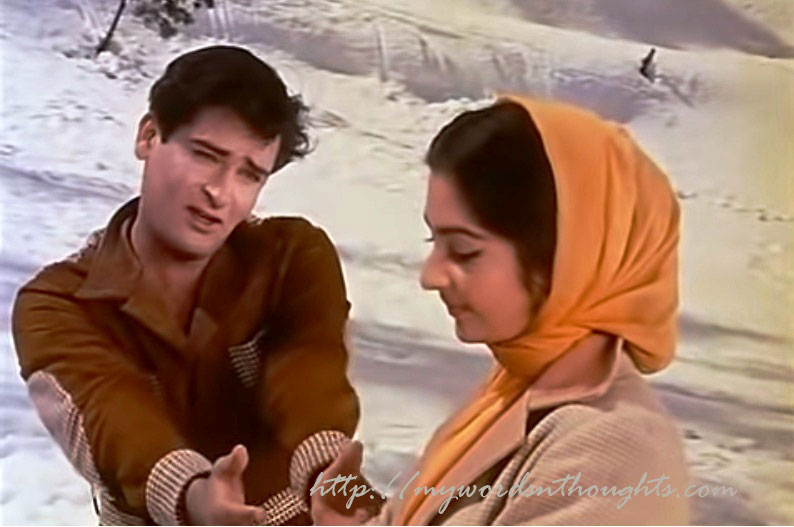Pulluvan Paattu – Song of Pulluvas to please serpents
As per beliefs Pulluvas are given the special rights to please serpents. As per legends they are created by Lord Siva within Sivakulam and Naga Gothram using the musical instruments, Brahmakudam, Vishnukaithaalam and Kailasa Veena, and they took birth from Dharbha (a form of grass), and that’s why they are called Pulluvar. Pullu – means grass in Malayalam. If the word ‘Pullu’ is pronounced in another way, it means a type of bird – a bird of omen. Also read: Mannarasala Sree Nagaraja Temple – The place for worship of nature and snakes.

A family singing Pulluvan Paattu to please Naga Gods
Many sub-divisions for Pulluva community
They are lower caste people; males called Pulluvans and female members called Pulluvathi. Pulluvan Paattu is a form of snake worship to please snake gods, and it’s conducted in homes, temples and predominantly in kaavus, which are almost extinct now. Kaavu is a less-populated place, believed to be divine and serpents exist there. But now with the extinction of ancestral homes, Sarpa Kaavu (Kaavu belonging to serpents) have also started disappearing. Yet snake worship is still popular in Kerala, and performed irrespective of upper and lower classes.
There are many sub-divisions for Pulluva community, and most of their rituals are ritualistic. There are many songs specially written to sing for such occasions, and most of them are categorized under Pulluvan Paattu. They also consider snake gods as presiding deity and worship them. They perform sacrifices, give milk, banana and turmeric powder as offerings and sing songs for them also. Pullorkudam, Single string Veena and Ilathaalam are the musical instruments used as accompanies. Veena is normally carried by female members.
Different forms to please the serpents
Nagampatikal forms the main group of Pulluvas who sings snake songs, and there is yet another group – Pretampatikal who sings ghost songs. Sarpam Thullal is a ritual dance form performed by female members of Pulluva group; that means Pulluvathis. They need to take Vrata – pious observances as a part of preparations for Sarpam Thullal and similar rituals. Kalamezhuthu is one such ritual where pictures of snakes are drawn on ground, and Kalam paattukal (serpent songs) and Sarpam Thullal performed to please serpents. The celebration is conducted in a grand way. The deities are offered Noorum Paalum (lime and milk).
The serpent songs have many stories related to snake tales of Hindu mythology. The story of Kadru and Vinita is quite popular. Songs and musical instruments form a good rhythm. Nowadays Pulluva groups have occupied many temples where Naga idol is installed, and they also travel from place to place and sing at homes too. There are many temples dedicated to serpents, of which Mannarasala is famous.
A small note on Sarpakaav (Sacred Groves)

Sarpakaav – where Naga idols are installed
As per records, Kerala has 2000 Kavus, second highest in India. There are many stories related to the origin of Sarpakaav, and most of them revolve around Parasurama. As per legends Sarpakaav was installed by Parasurama. One story says, soon after Parasurama created Kerala, it was inhospitable for Brahmins to live. So Vasuki instructed Parasurama to build a separate residence for serpents where they can be worshiped. Thus Parasurama created Kaavu across Kerala. Slowly many residents close to nature, most of them being local tribals started worshiping serpents and many rituals were born. It was a time when people worshiped Panchabhoota, and that’s how sarpakaav – replica of small forests and snakes became a part of it. It’s also said that Parasurama donated to Brahmins to compensate his sins to slaughter several Kshathriyas.
Those glorious days have gone when Sarpakaav used to be a part of all big Tharavaadu (ancestral home). There used to be a pond and kaav as a part of every ancestral home, which formed an integral part of Kerala culture as well. They were placed at the south-west corner of the land which surrounds the residence. They stood as shields to south-west wind, and protect the home. Abundant in trees and different varieties of plants, they give shelter to many living creatures, and provided fresh air to breathe. Access to Sarpakavu was forbidden, except for conducting rituals or celebrations, and hence the lonely place gives the illusion of a small forest. Many rare varieties of flora and fauna are found here, and Sarpakaav were once deeply linked to environment system.

Image credit: Anoop
It was once deeply linked to Kerala’s Hindu tradition, and many families carry its dead remains only nowadays. When Nagas are given god’s status and worshiped, it gives a good message of man’s bond with nature. Yes, with the destruction of many heritage homes, such ponds and sarpaav have already started disappearing. However snake worship and Ayilyam star – still form an integral part of Kerala Hindu worships. It’s believed that if devotees please Naga gods, they will grand you prosperity and offspring in return. They are also believed to cure many skin diseases. It’s heartbreaking to see ‘Kaavumaattal’, where the serpent idols are reinstalled at a desirable place and Sarpakavus are destroyed to pave way to concrete buildings. It should not be forgotten, our ancestors have made such serpent homes to protect many living beings, very close to nature. Known for its soil and water conservation features, Sarpakavu preserves biological wealth as well.
You can read a few more articles related to temple rituals, offerings, customs and celebrations, mostly associated with temples across across Kerala. Here is the page link. Click on the images in the gallery to read














Recent Comments